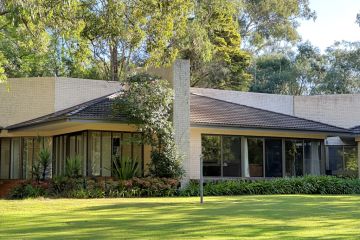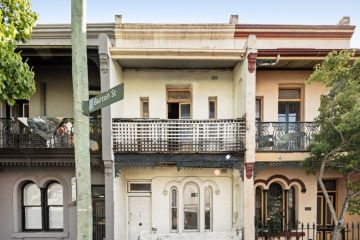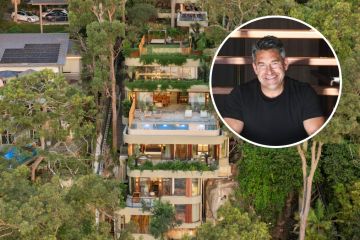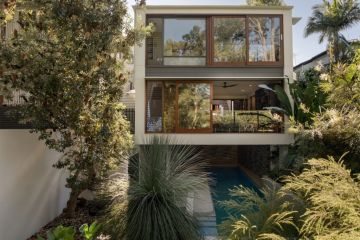Built-in furniture is a mid-century modern look that works well in new homes
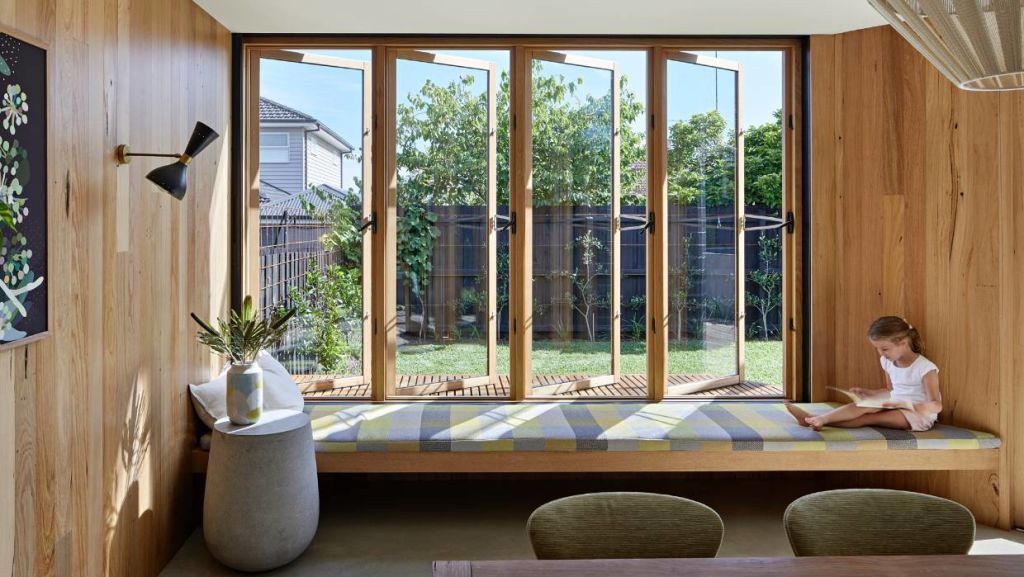
One of the strongest design trends for new houses borrows from an idea that’s been around for centuries.
But modern built-in furniture is nothing like the painted mock-Tudor examples we find in houses built in the 1920s. It owes a lot more to architect Frank Lloyd Wright and the mid-century modern movement.
Wright was very big on built-in furniture because he believed an architect was responsible for the “whole” house, and he didn’t want his work marred by furniture that didn’t work with the design. It was a way to control the design outcome – all to the benefit of the client who was paying for his talent.
That reasoning may still be a driver for the move towards built-in furniture. But space considerations are another key reason.
Built-in furniture also keeps things clean and tidy. And it works especially well in modern houses that reflect a mid-century influence. Think plywood and timber-lined interiors and casual family living areas.
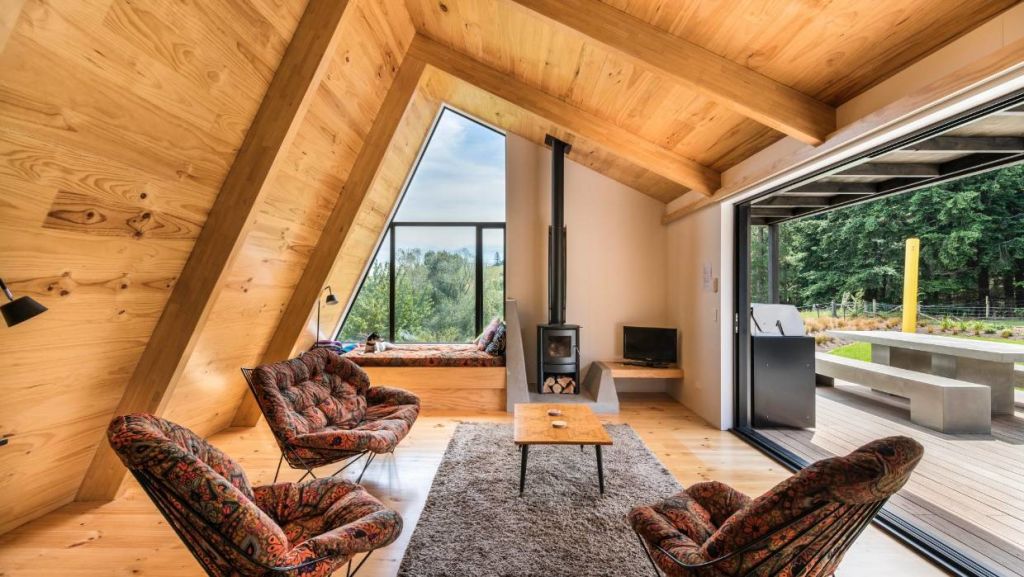
Bent Architecture recently designed an extension for a house in Melbourne that typifies the modern trend – it features a long window seat and a stone plinth that extends from the inside to the outside, creating additional seating outdoors.
Director Paul Porjazoski says such built-in furniture allows “a more immediate connection between our clients and the architecture of the spaces that we’ve created”.
“It also allows a cohesive approach to materials and finish, and makes the most of the spaces defined.”
Architects and designers frequently specify built-ins for holiday homes. Architect Cymon Allfrey’s own home is a good example. His award-winning house features a window seat and a TV platform that forms part of a sculptural fireplace surround and hearth. He also specified built-in bunk beds.
Architect and co-director Craig South from Allfrey + South Architects is also a big fan. “I really enjoy using built-in furniture. It gives a space purpose straight away, whether it is a window seat to capture the sun or view, a specific spot to dine, or a library space ready for books.
“Built-in furniture can be space efficient, because it is built into a specific space – it means you are not buying furniture that needs space around it because it doesn’t quite fit.”
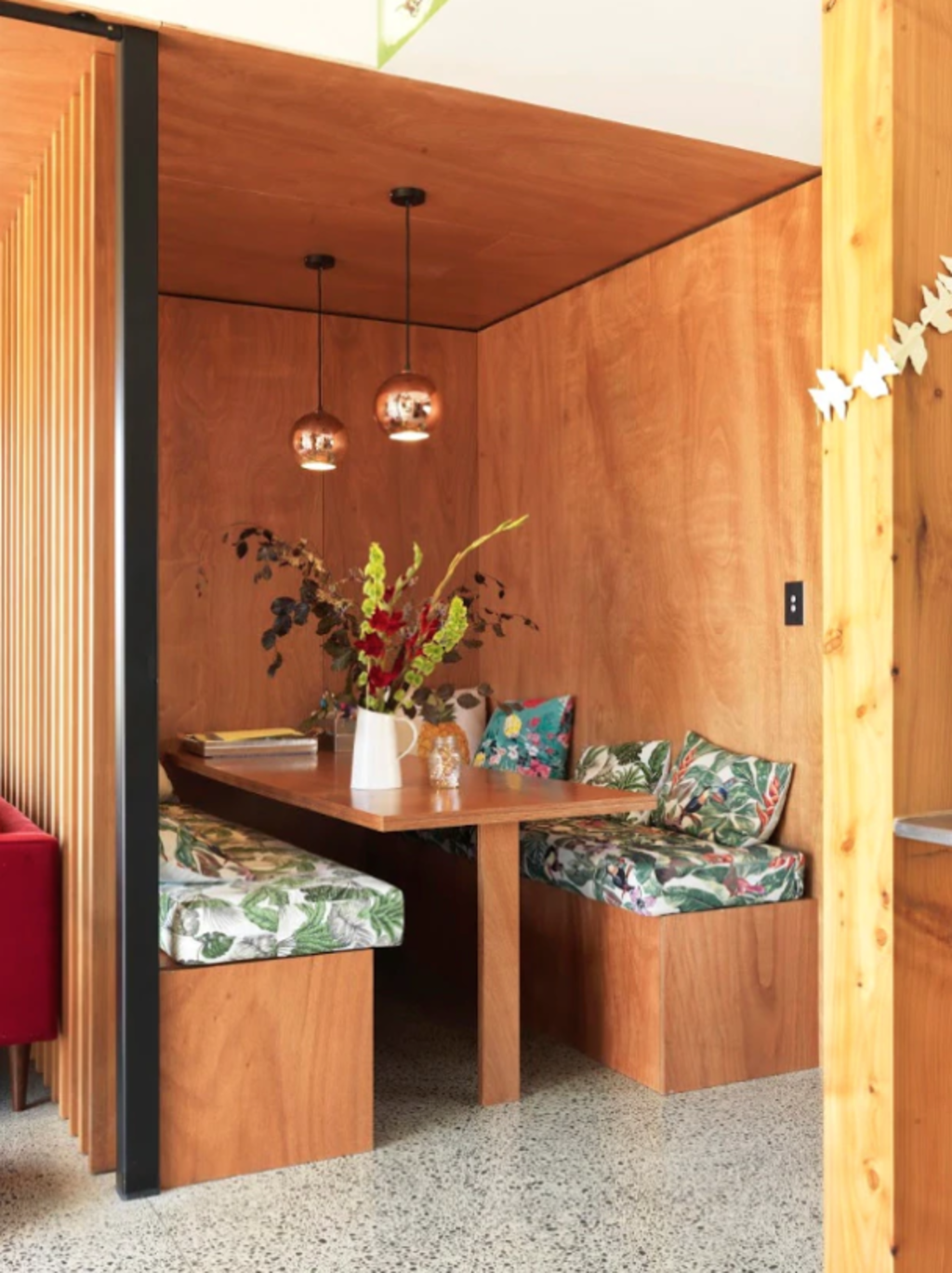
South says the firm is seeing increasing opportunities to link the interior design to the architecture in a house. “Materials continue through the interior design, and built-in furniture is a key part of this. When you move through a home there is a consistent language – the architecture and interior design have alignment and balance.
“We are seeing some flashbacks that are a modern interpretation of furniture from previous eras. You can turn a window seat into an abundance of clever storage. And the joinery can be size specific. For example, little cubbies can be built to hold phones and gadgets, include charging points.”
Another homeowner building a beach house says every room will have built-in furniture. The five bedrooms will all feature built-in timber platforms for bags, and matching cubbies for clothes and toiletries. There won’t be any wardrobes – everything will be on show and right at hand. The four bunk beds will also be built-in.
The owner says the family camped over the summer for many years and wanted to bring a similar “camping aesthetic” to the house.
The 1950s era is also reflected in a notable move toward built-in tables with banquette seating for casual meals – much like a booth in a diner. It’s a space-saving idea, and the intimacy helps keep the family connected.
Vic Bibby of interior design firm Bibby & Brady is a big fan of the built-in. Followers will know already that the team likes to incorporate built-in banquette dining areas for clients.
“Built-in furniture pieces are fantastic if done well,” said Bibby. “I love built-ins.”
“Obviously they’re tailor made to fit a space perfectly, as well as your specific needs and style. They help to create a clean, minimal and cohesive look, and are perfect for making the most of small or awkward spaces. Not to mention they’re brilliant for creating extra storage, and you can integrate lighting into certain pieces.”
- This story originally appeared on stuff.co.nz
We recommend
We thought you might like
States
Capital Cities
Capital Cities - Rentals
Popular Areas
Allhomes
More
